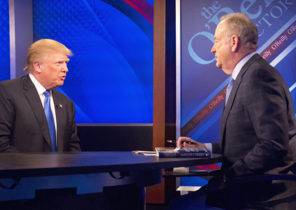
Worrying political developments in the United States and the United Kingdom may be the reason that in the near future and already contested the world economy will be in even more suspense. But in the condition in which we enter into the year 2017, the cyclical evidence in fact suggests the opposite.
From my time working as chief economist at Goldman Sachs, I watched six indicators from around the world which, taken together, present a reliable picture of how will look the world economy in the next six months. At this point, all six indicators are more encouraging than for some time back, only one of them has fallen slightly from recent highs.
The first indicator is the weekly requirements of unemployment in the United States, which can determine the overall stability in the us economy. Properly trained economists treat unemployment as an insufficient indicator, but these data can also be useful for predicting the immediate future. Requirements for unemployment in the US is always relevant, as they are compiled weekly, and the statistics indicate that they are a leading indicator for the stock prices of the United States. According to last week, claims for unemployment remain relatively low, they remain for some time, which is favourable for stock markets in the US.
Similarly, the production Index of the Institute for Supply Management (ISM) provides a fairly good prediction of the Us economy for the next 3-6 months, even if production is a relatively small share of GDP. Like the latest requirements of the unemployment figures in the ISM, at present, give reason for optimism.
The third indicator is a subcomponent of the same ISM survey: new orders and inventories of producers. Currently new orders are increasing and inventories are low, which suggests that businesses in the coming months will have to produce more to satisfy these orders.
Looking beyond the United States, the fourth indicator represents the ratio of retail costs to China in relation to industrial production (adjusted for inflation). These figures give us an idea of how cyclical trends and structural change in the balance of China from exports towards domestic consumption. This is likely to be one of the most important indicators for China and the rest of the global economy in the coming years.
The ratio of Chinese monthly retail sales of industrial products, while unstable, since 2008 has been weak trend growth, and apparently, recently there’s been another surge in consumption. That’s why I worry less than others about the often-mentioned risks facing the Chinese economy. Chinese consumer spending remain high, despite the slowdown in industrial production and investment, as well as the efforts of the government to limit spending on luxury items.
Some may argue that the Chinese data cannot be trusted. But I don’t understand why these ratios by one of the parties will be more or less reliable than the data of the other party. Why Chinese officials to manipulate consumption data, allowing the indicators of industrial production to register a decline. In any case, we have to work with what we have.
The fifth indicator is the trade data of South Korea, which is the first day of each month regularly provides the results of previous auctions — faster than any other country. South Korea is an open economy and trading partners around the world, including the US, China, Japan and the European Union, so its trade data can be extrapolated to make conclusions about the state of world trade.
After a downward trend in recent years, with Nov trade in South Korea showed signs of recovery, particularly from the point of view of export growth; and in January, it is substantially stabilized. Of course, these results differ with all the praises of globalization, which can be heard these days, but a strong protectionist administration of Donald trump in the U.S. today, could send the global trade in the long retreat. But recent data from South Korea suggests that globalization is still showing signs of life, and that 2017 is a worthy beginning.
In fact, if you don’t count the worst-case scenario under the trump, it is likely that the slowdown in world trade growth in recent years may be temporary. Perhaps it was an isolated incident that reflects a variety of factors, including the Euro crisis, continuing economic weakness in many European countries; a sharp decline in prices of raw materials; the dramatic slowdown in Brazil, Russia and other emerging economies; and more stringent rules for international banks, which could inhibit trade Finance.
The last key indicator is the monthly Ifo business climate Index in Germany, which contains useful cyclic data for the whole of Europe, thanks to the Central role of Germany in the economy of the continent. The Ifo survey, in recent months presented positive results, although December data was more promising than in January.
Taken together, these six indicators tell me that the world economy might now be in the growth, to a value of more than 4%. This is the fastest growth for several years — although the average growth rate over the past decade of 3.3% was slightly lower than in the previous decade, and close to the pace of the previous two decades before that. At the same time, these six indicators, nothing to tell us about what will happen after a few months. Will the growth of the world economy to be strong, strengthened further or begins to diminish, is an open question.
It was interesting to watch the rapid growth shocks, such as a referendum Brakcet in the UK and the election trump. And still, it is unclear why this is happening. Someone can say that this trend is the result of political decisions in the US and the UK, but much more likely it would be to say that this is happening contrary to these decisions. Sorry, there are no indicators that give an answer to this question — only time will tell.







